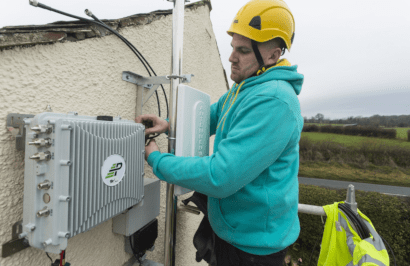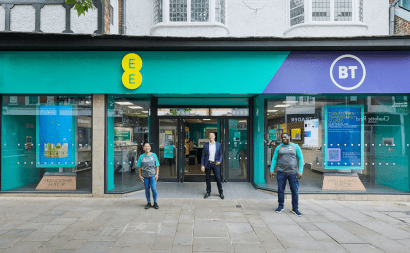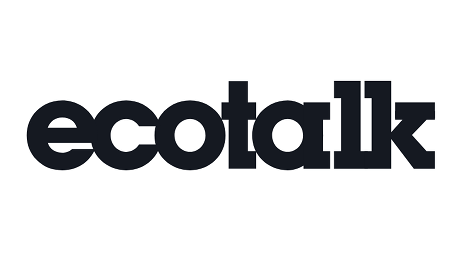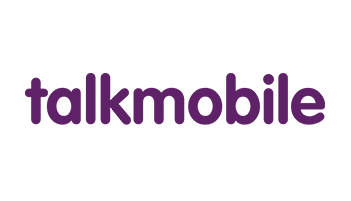Why are EE so expensive? What drives their higher prices

The retailers featured on this page may compensate us when our readers follow links to their websites and make a purchase. More
We look at how EE's network building costs, running retail stores and marketing themselves translate into the prices you pay. Last updated: 22nd July 2025.
Comparing EE's prices
EE are generally one of the more expensive networks
If you’ve been comparing SIM only plans recently, you’ve likely noticed that EE’s deals are among the most expensive around. This is especially true when compared to the lower-cost networks that use EE’s network.
The same goes for EE’s phone contracts. Their usage plans (mins, texts and data) are usually identical to their SIM only plans, so any savings you make on the phone are often cancelled out by the high plan cost.
There are also additional charges to factor in. Extra data add-ons can cost a lot if you run out of data, international calls are pricey, and you’ll now have to pay roaming fees in the EU on most EE plans.
On top of all that, EE increase their prices every year based on inflation. That means your monthly cost will go up annually, making an already expensive deal even more costly over time.
Useful link: Our guide to cheaper EE alternatives on their network
What drives up prices?
EE have to fund their high-quality network infrastructure
One of the more understandable reasons behind EE’s higher prices is the cost of building and maintaining their network. EE currently offer the UK’s widest 4G coverage and are still rolling out 5G to new places across the country.
Over the past decade, EE have spent billions to develop their infrastructure. This large investment helps explain their reliable coverage and strong signal strength in more places than most other networks.
They also have to pay the full cost of their mobile masts, maintaining equipment, and deploying new technologies. Smaller networks don’t pay these costs directly, so they can afford to offer cheaper plans.
But that still doesn’t fully explain why EE are usually more expensive than other major networks like Three, who have broader 5G coverage in some areas. So what else could be pushing EE’s prices up?
Useful link: Check coverage using EE’s signal map
Their marketing requires a big budget
EE spend heavily on marketing their brand, including long-running ad campaigns featuring Hollywood actors like Kevin Bacon. It’s likely how you heard about EE in the first place.
They’ve also recently rebranded with a big focus on promoting how EE can support gaming, learning, remote work and broadband at home. This has required a significant marketing shift and extra spending.
EE also sponsor Wembley Stadium, and provide the mobile infrastructure that powers it, including 5G coverage. These partnerships are great for visibility but come at a high cost.
All this adds up to a large marketing budget, which inevitably feeds into higher plan prices. O2 and Vodafone follow a similar approach, while Three tend to spend less and are usually the cheaper main network.
Useful link: Read our EE vs Three guide
Their stores and other overheads also cost a lot
EE have stores on most high streets, in shopping centres and even larger supermarkets. This helps make them one of the UK’s most recognised networks, letting customers buy in-store or get support face to face.
But those stores come with costs. EE have to pay for rent, business rates, staff wages and everything else tied to keeping physical locations open. Those overheads all add to the price of their mobile plans.
That said, it gives them a big sales advantage. Many people still prefer joining in person rather than ordering online, and it’s easier to upsell customers to premium plans face to face.
It’s a bit of a feedback loop. Higher operating costs mean higher prices, but EE’s in-store model helps them sell those plans. They also invest more in customer service than most and rank among the best for support.
Useful link: Find your nearest EE store
They don’t need to lower costs to sell deals
A big reason EE charge higher prices is simply because they can. They have one of the largest subscriber bases in the UK, so they don’t need to beat competitors on price to keep attracting new customers.
Their brand is also one of the most recognisable in the country, thanks to advertising and a strong retail presence. That visibility alone brings in customers, with many joining without comparing deals elsewhere.
There’s also a perception that budget networks mean worse quality. While that’s not always true, people often feel more confident joining a premium brand like EE, assuming they'll get a better experience.
EE’s higher prices are due to their big network, investment in advertising and infrastructure, and the fact that there’s little reason for them to drop prices. But there are better-value providers on their network.
Useful link: Our guide to the cheaper providers on EE’s network
Cheaper alternatives
You can join these budget providers and use EE’s network
1pMobile are our favourite alternative to EE. They provide identical coverage and data speeds to being on EE and include WiFi calling and EU roaming. 1p provide the closest experience to being on EE’s network directly.
spusu are another brilliant option with full access to EE’s 4G and 5G signal on great value SIM only deals. And they offer inclusive EU roaming, international mins on all plans and let you join directly on an eSIM.
Lyca Mobile and Mozillion are also decent choices. They share identical 4G and 5G coverage to EE and offer low costs and some very nice benefits between them.
There are a few other choices too. Ecotalk are a great choice for environmentally conscious buyers, Talk Home Mobile offer flexible low-cost 1-month plans and Co-Op Mobile are great for roaming in the EU.
Useful link: Our full guide to all networks on EE
SIM only deals
Plan
Data: (0MB+)
Minutes: (0+)





























 Thanks, we'll send that out now. Please check your inbox for our email.
Thanks, we'll send that out now. Please check your inbox for our email.